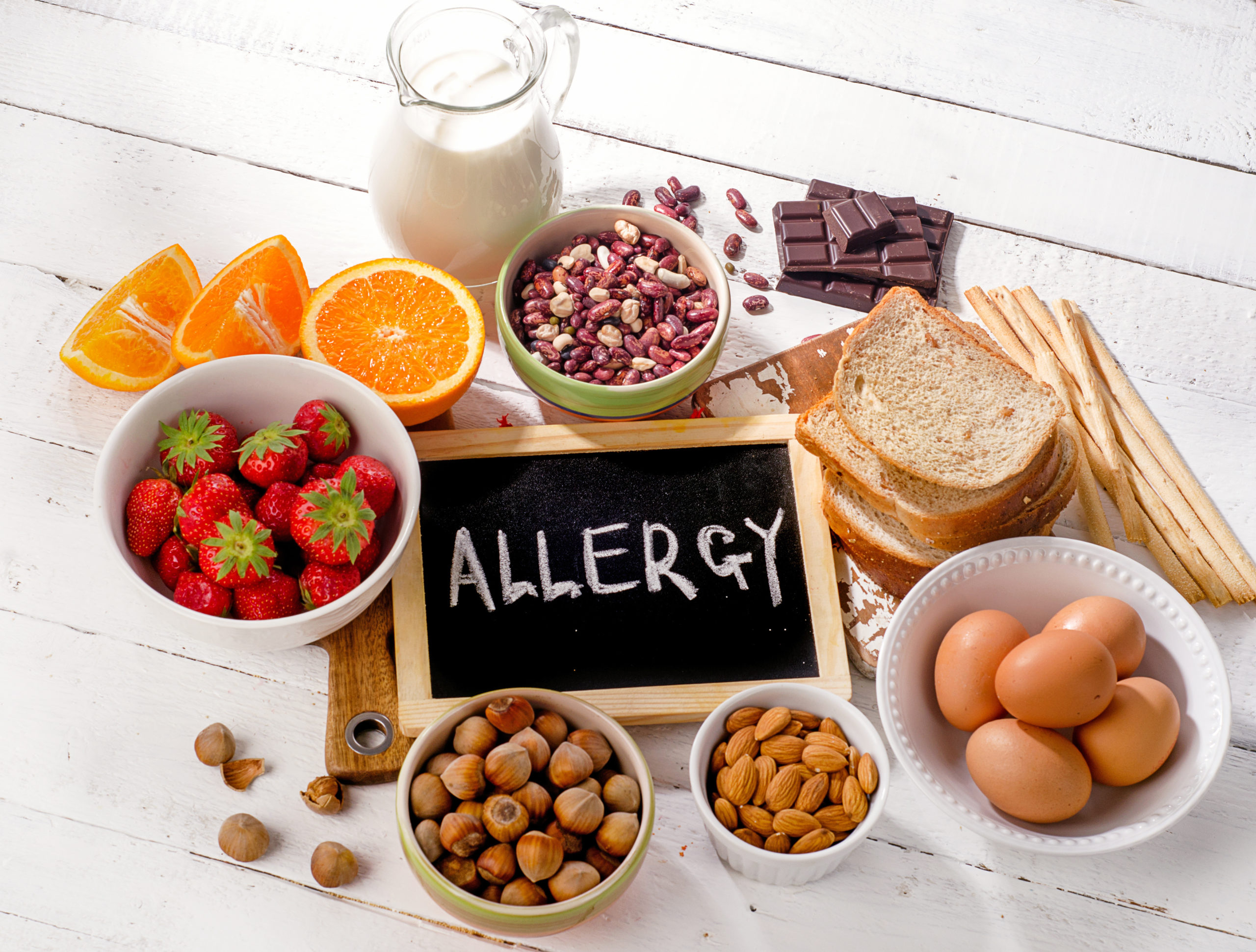What is the difference between food allergy and food intolerance?
There is an abnormal reaction of the body's immune system to a particular food with a food allergy. This can range from mild to severe and life-threatening reactions. Common reactions include skin problems such as rashes and eczema, tummy (abdominal) symptoms, and bowel disturbance.
Food intolerance happens because the body has difficulty digesting certain substances in food. Food intolerance can cause symptoms such as diarrhea, bloating, and stomach cramps. However, there is no allergic reaction with food intolerance, and the immune system is generally not involved.
The symptoms of food intolerance usually occur a few hours after eating the food. Allergic reactions usually happen much more quickly. With food intolerances, you need a lot more of the food to cause the symptoms.
What causes food allergy?
The most common food allergy triggers are egg, cow's milk (dairy), peanut, tree nuts, sesame, soy, wheat, fish, and other seafood. However, almost any food can cause an allergic reaction, including fruits.
What causes food intolerance?
Lactose intolerance and direct effects of foods and additives are the more common causes. Many people incorrectly assume symptoms they have due to food intolerances when their symptoms are not due to food. Consequently, people commonly cut things out of their diet that they believe in, causing their problems. In itself, this can lead to further problems.
When to see a doctor?
See a doctor or allergist if you have food allergy symptoms shortly after eating. Seek emergency treatment if you develop:
- Constriction of airways that makes it difficult to breathe
- Shock with a severe drop in blood pressure
- Rapid pulse
- Dizziness or lightheadedness
کھانے سے الرجی اور عدم برداشت
کھانے سے الرجی اور کھانے کی عدم برداشت میں کیا فرق ہے؟
کھانے سے الرجی میں ہمارا جسم کسی مخصوص کھانے کے خلاف قوت مدافعت سے ردعمل ظاہر کرتا ہے۔ یہ رد عمل معمولی بھی ہو سکتا ہے، شدید بھی اور یہ جان لیوا بھی۔ عام طور پر معمولی ردعمل میں جلد پر ریش اور سرخ چھتے پڑ جاتے ہیں یا پھر معدے اور آنتوں میں خلل پیش آتا ہے۔
کھانے کی عدم برداشت اس وجہ سے ہوتی ہے کہ ہمارا جسم کھانے کے کچھ مادہ کو ہضم کرنے سے قاصر ہوتا ہے۔ اسکی علامت میں موشن (اسہال)، اپھارہ، اور پیٹ کا درد شامل ہیں۔ تاہم، کھانے کی عدم برداشت میں کسی قسم کی الرجی نہیں ہوتی اور نہ ہی قوت مدافعت شامل ہوتا ہے۔
کھانے کی عدم برداشت کی علامات عموماً کھانا کھانے کے بعد چند ہی گھنٹوں میں ظاہر ہوتی ہے جبکہ کھانے سے الرجی کی علامات نسبتاً جلدی سامنے آجاتی ہیں۔ کھانے کی عدم برداشت کھانے کی زیادہ مقدار سے سامنے آتے ہیں۔
کھانے کی الرجی کی کیا وجوہات ہیں؟
عام وجوہات میں شامل ہے انڈے کی زردی، گائے کا دودھ(ڈیری)، مونگ پھلی، گریدار میوے، تل، سویا، مچھلی، اور دیگر سمندری غذا۔ البتہ تقریباً کوئی بھی غذا یہاں تک کہ پھل کھانے سے بھی الرجی ہو سکتی ہے۔
کھانے کی عدم برداشت کی کیا وجوہات ہیں؟
للیکٹوز کی عدم برداشت، کھانے کے اثرات، اور کھانے میں شامل اضافی اجزاء کھانے کی عدم برڈاشت کی وجہ بنتے ہیں۔ بہت سے لوگ اس غلط فہمی کا شکار ہوتے ہیں کہ اُن میں علامت کھانے کی عدم برداشت کی وجہ سے ہیں جبکہ حقیقت میں ایسا نہیں ہوتا ۔ ایسے میں وہ اپنی روز کی غذا میں سے ان کھانوں کو نکال دیتے ہیں جن پر انہیں شک ہوتا ہے مگر ایسا کرنے سے مزید پریشانی ہو سکتی ہے۔
ڈاکٹر سے کب ملیں؟
اگر کھانا تناول کرتے ہی کھانے کی الرجی کی علامات ظاہر ہوں تو ہنگامی حالات میں کسی ڈاکٹر یہ الرجست سے رجوع کریں۔ ان علامات میں شامل ہے:
سانس کی نالی کا تنگ ہوجانا کہ سانس لینے میں دشواری ہو۔
بلڈ پریشر میں شدید کمی اور باڈی شاک۔
تیز نبض
چکر آنا۔
Doctors to consult (Consultant Nutritionist):
Dr Abeer Jameel, Dr. Syed Ikram Abidi, Dr. Muhammad Israr, Dr. Rabia Aslam
Note: Click the Doctor's name to make an appointment.
Reference:
https://patient.info/allergies-blood-immune/food-allergy-and-intolerance
https://www.mayoclinic.org/diseases-conditions/food-allergy/symptoms-causes/syc-20355095
https://allergy.org.au/patients/fast-facts/food-allergy
https://patient.info/doctor/food-allergy-and-food-intolerance

